10 Mistakes You Need To Avoid Making At A Sushi Restaurant, According To A Chef
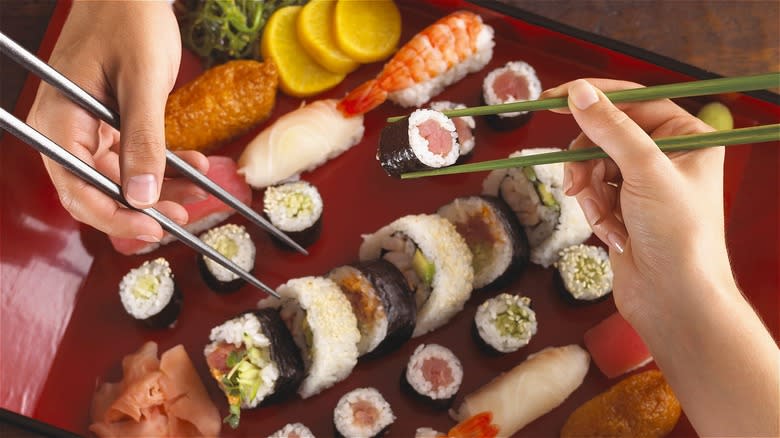
Sushi is a tremendously delicious delicacy. It has gained so much popularity over the last couple of decades that you can sometimes buy it at truck stops. While gas station sushi is probably not the best idea, you should definitely go out to eat it at a restaurant near you. Whether you live in a smaller city or a bustling city, you likely have a range of establishments of this kind to choose from, including family-owned, informal Japanese restaurants and swanky, upscale sushi bars with fine wine, liquor, and gourmet cuisine.
I love sushi myself, and my palate is well-developed from having worked for more than a decade at several sushi eateries. While working as the general manager of an upscale sushi bar in a burgeoning downtown area, I had our head chef train me, so that I would know every aspect of the restaurant. That proved to be a good choice, as I later used those skills to work full-time as a sushi chef in a couple more restaurants. Sushi is healthy and delicious, and the experience of sitting at a sushi bar is like no other. Since I have been in the business for many years and know the cuisine well, I want to give you some tips to avoid these 10 mistakes the next time you order sushi.
Read more: 12 Underrated Types Of Fish You Should Try At Least Once
Being Nervous
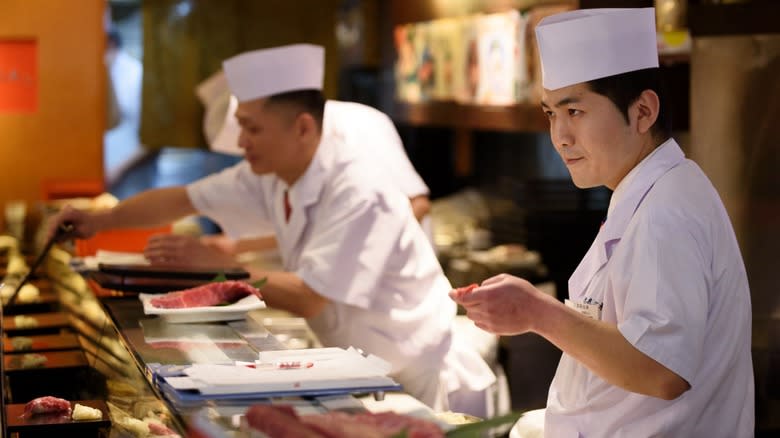
This is for noobs. Don't worry too much if you are unfamiliar with the foods, ingredients, and names of things. It is just food and you won't be graded on how you pronounce certain menu items. Instead, see your position at the sushi bar as an opportunity to sit directly in front of your chef and speak to the person preparing your food. The chef is there to help guide you through the meal and make recommendations. They won't be judging you and, if they are worth their salt, should be eager to introduce you to something new.
I should add that I can only comment on an American experience, as our sushi and customs are altered to please a local palate. Eating sushi in Japan is a different experience. Regardless, the interaction with the person preparing your food right in front of you is usually a pleasant experience. Some chefs who have a little extra personality can even take things up a notch and make your night. Just relax and enjoy.
Ordering California Rolls

This is an incorrect choice -- I apologize if the California roll is your favorite. The California roll is one of the most commonly ordered items on a sushi menu, but that does not mean it is a good one. It was created by an esteemed chef in Vancouver in the 1980s with ingredients he believed to be more palatable to the Canadian tongue. The ingredients, besides the nori (seaweed) and rice, are cucumber, avocado, and crab stick: a type of imitation crab made from processed white fish such as pollock. Back then, the creation of the California roll was a brilliant move to introduce then-unfamiliar ingredients to new customers, but its time has passed. There are so many better options today.
Sushi is such a versatile and varied food, and there are tons of flavors out there to enjoy. Furthermore, not all sushi recipes use raw fish -- which can be an aversion for some people. There are many ways to prepare sushi to please even these individuals' palettes. The California roll can be a way to ease someone into the idea of eating sushi, but it's not even the best way to do it, and its flavors are not especially compelling, meaning they're not a good representation of what sushi has to offer.
Failing To Ask Questions

For the inexperienced, a sushi menu can feel daunting. While every establishment is unique and has its own way of doing things, those where I have worked have all included a menu for the table offering a range of Japanese and fusion dishes with a separate menu listing the many rolls, nigiri, and sashimi available. If you don't know what nigiri and sashimi are, ask your chef. They are there to help and can hopefully guide you through the menu with recommendations. This may be difficult on a Friday evening, so be aware of how busy it is -- sushi takes time to prepare well.
A good chef knows that questions are another opportunity to earn a bit extra. Sushi chefs are generally paid well -- depending on the restaurant -- and do not rely on tips in the way that waiters and bartenders do. Their tips are usually just a nice extra bit of spending cash, and everybody likes to have that. So don't be afraid to ask for some guidance and extra explanations of the sushi menu. If you see tako salad on the menu, be sure to ask about it, because it's not something that comes in a tortilla.
Ordering Only The Basics
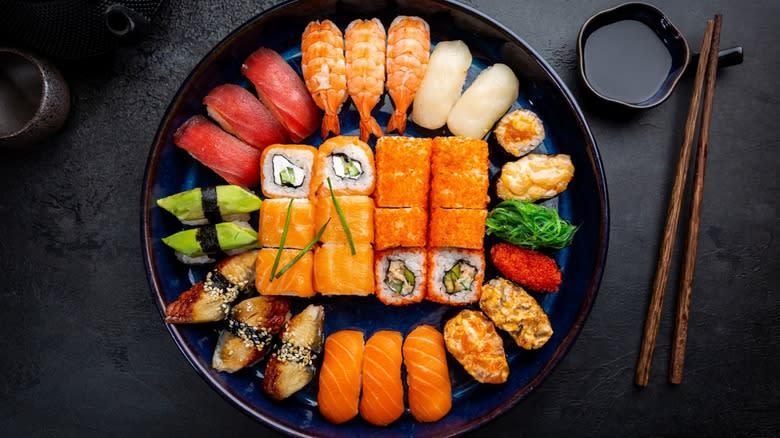
Humans are creatures of habit. Most of us cannot help but eat the same things over and over because it is comfortable and safe. I used to see this often while working as a sushi chef, but I encourage you to avoid getting stuck in a rut.
By "ordering the basics," I mean ordering one of several rolls you will see on almost any menu. This includes the California roll, Philly roll, veggie roll, and a few other rolls with very basic ingredients. Sometimes, people have tried one or two rolls and like them. They then don't think to branch out for fear of not liking another type of roll. But if you don't branch out and try others, you will never know what else you do like.
There is nothing wrong with ordering a Philly roll. It's just that the house specialty, a rainbow roll, or a dragon roll -- all of which can have wildly different recipes from one place to another -- can present an irresistible blend of flavors that will have you coming back for more. Life is short. Live boldly.
Making Disparaging Comments About Raw Fish
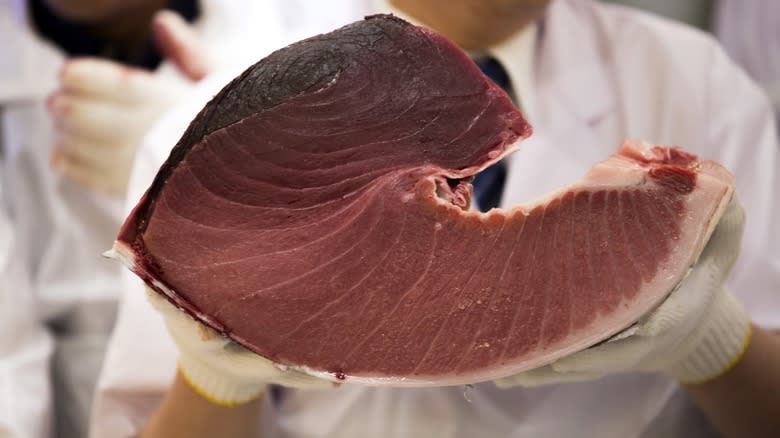
When I was a sushi chef and told people what I did for a living, I heard so many dismissive comments about raw fish from people who found it unappetizing. Of course, there were ample moments when people told me how much they loved sushi, but way too many times it was the opposite.
If you are new to the cuisine, be aware that your chef has likely heard this before. However, humans have eaten raw fish for millennia and all over the world. My point is that there is nothing dangerous or odd about it. It is just foreign to many Americans and that which we do not know can cause apprehension.
But when you do allow yourself to branch out and try various types of fish, you will see that it can be quite tasty. If given the opportunity and your chef has it available, try toro, the fatty part of the tuna. It is generally much more expensive but tastes so buttery smooth that it's worth it.
Playing It Safe
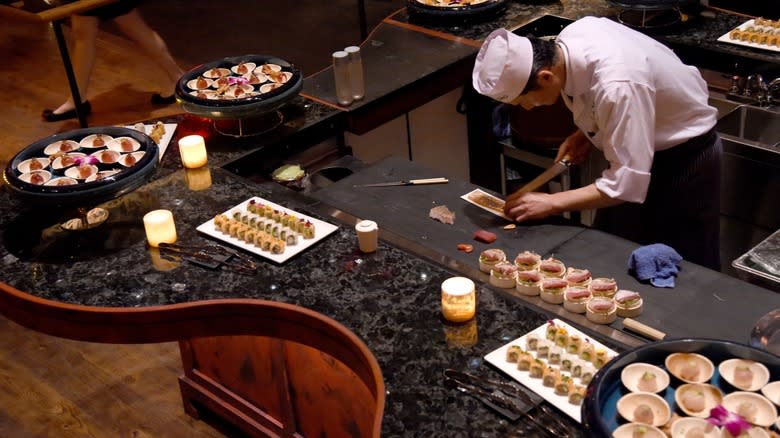
Perhaps you already know what you like and will stick with that. That is perfectly fine. But if you really want to get the full experience of being at a sushi restaurant -- especially if you dine out infrequently -- you should trust your chef.
As a sushi chef, I used to love it when customers asked me to make them something special. Preparing sushi is like an art, and it can take as much creativity, skill, and care, as any food cooked in the finest of kitchens. It takes years of experience to know what flavors will work together and how to experiment with new combinations to come up with something unique.
Furthermore, sushi bars rely on several sauces. I used to create new ones in my spare time, but could only use them for chef's choice rolls or my own food. The point is that you are welcome to offer the chef some of your favorite ingredients, and they may be able to surprise you with a new and inventive dish using those ingredients.
Avoiding Conversation
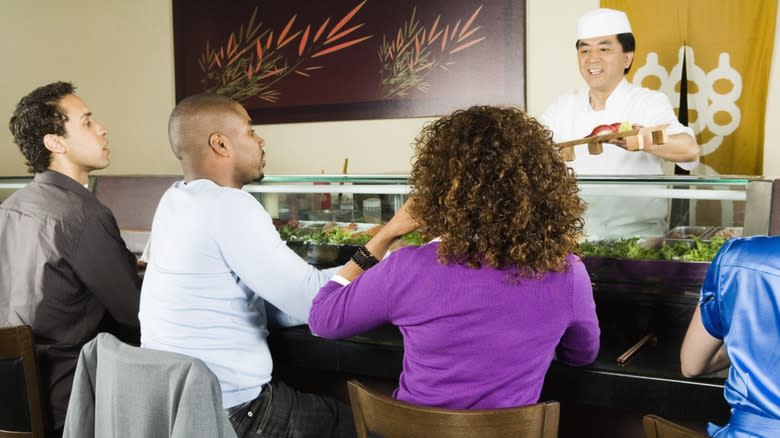
Sitting down across from a chef making your food is a great time to strike up a conversation with a stranger. You might be surprised how few people do. Chances are, if you are there when it's not extremely busy, your chef should be happy to gab it up while working. It helps the time go by quicker for them. Moreover, you can learn something about the cuisine and the art of preparing it. I was always happy to share what I was doing so long as I wasn't buried in orders.
There is a caveat to this. Some sushi chefs will prefer not to talk much while working, due to their personality. In other cases, language may be a barrier to conversation, leading some chefs to not speak with sushi restaurant customers while they are working. If the chef at your sushi restaurant doesn't want to talk, you should also respect that.
Using The Condiments Incorrectly
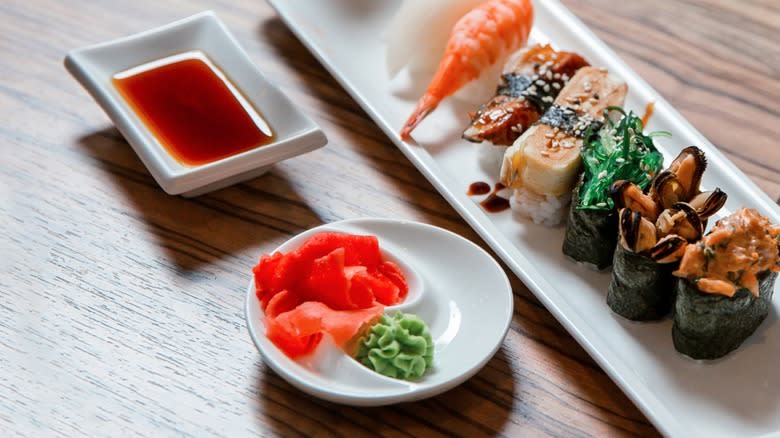
This sushi restaurant faux pas happens all the time. It's largely because of bad habits developed by American patrons who are generally naive about Japanese cuisine. But there is often a good reason for learning the rules and instructions for using condiments found at a sushi restaurant correctly. That reason is flavor.
Soy sauce, wasabi, and ginger are to be used sparingly. You will often see people filling their soy dishes full and mixing large amounts of wasabi with the soy with bits of ginger floating around in the slurry. This is all wrong. So is dipping the rice part of nigiri into soy sauce.
The proper way to do this is by dipping only the end of the fish in a small amount of soy sauce before eating it, as rice soaked with soy sauce will fall apart. Soy sauce is meant to enhance the flavor, not take it over. The ginger is a palate cleanser eaten between different flavors only. Wasabi should also be used sparingly, with a small amount applied to the fish only to add a tiny amount of heat. Of course, you are welcome to eat your food however you want -- you paid for it. I offer these tips only so you can know how your sushi is meant to be enjoyed.
Opting For Snapper
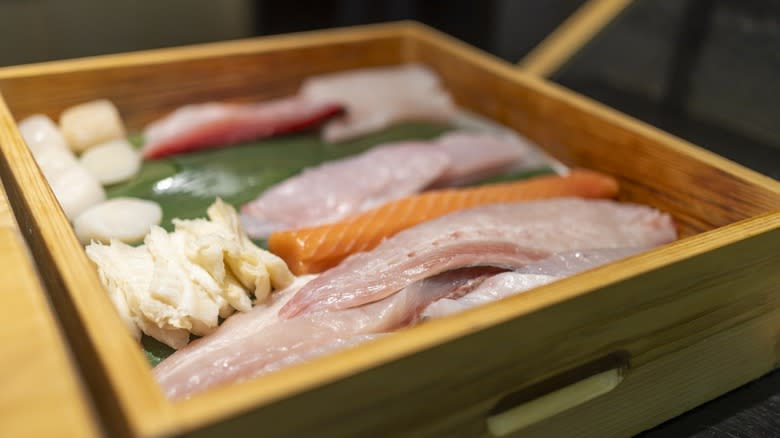
The most important element of preparing good sushi is having high-quality, fresh fish. Restaurants near coasts probably have the best access to the widest selection, but with airfreight, fresh seafood of the same quality is available in the Midwest in a matter of hours.
Furthermore, the freshness of fish can be a bit misleading, because the U.S. Food and Drug Administration requires almost all seafood to be frozen before being sold. Although there is an exception for tuna. Aside from tuna, you should know that the fish you order likely has been frozen to destroy any parasites. We used to get orders in twice a week to ensure freshness.
However, snapper was always tricky. Snapper is notoriously difficult to clean and prepare. Heavy bones and large scales make it difficult to work with, and inexperienced chefs can easily waste a good portion of what is a relatively small fish. It is also not highly popular, at least not in the Midwest, making it a slow seller. In every restaurant where I have worked, the solution to keep snapper on the menu is to serve frozen tilapia filet instead. The flavor and texture are very similar, and no customer in my experience ever said a word about it. Just know that if you order snapper, it may not be the best, and it may not be the fish that ends up on your plate.
Substituting White For Brown Rice
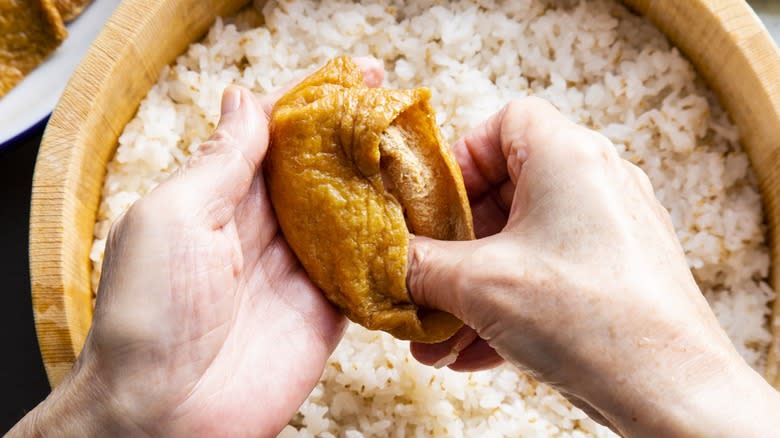
Brown rice is a healthier option than white rice. According to WebMD, brown rice has a low glycemic index, meaning it's less likely to spike your blood sugar after you consume it. Conversely, white rice does quite the opposite. Consuming white rice was even linked to an increased risk of diabetes. Furthermore, brown rice includes the outer layers of the rice. These layers are where the most healthy vitamins and minerals reside, and those are stripped away when white rice is processed. These and other factors make brown rice a significantly healthier choice and a good substitution for most meals. But I recommend not ordering sushi made with brown rice.
Sushi is made with short-grain white rice that is cooked and prepared with a sweet vinegar mixture. Sushi rice is soft, flexible, and pliable, which is required for shaping nigiri sushi and rolls. Brown rice just doesn't have the same qualities, meaning it falls apart too easily. Also, the brown rice will not be fresh after sitting overnight. Unless you have a strict dietary regimen, have sushi in moderation as it is meant to be, and save the brown rice for another night.
Read the original article on Daily Meal.

